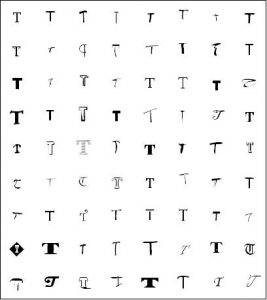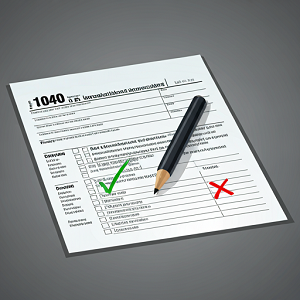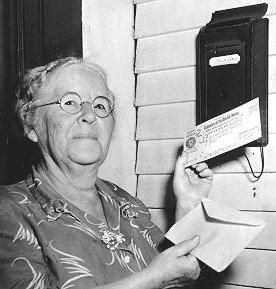In a previous article we reviewed the very confusing Social Security Spousal Benefit. That article raised a lot of questions from readers about another confusing provision of the Social Security system: the Survivor Benefit.
As with all of these discussions, don’t expect to immediately understand it – this stuff is complicated, and even the Social Security staff often have difficulty explaining it. Read through this carefully, see the referenced articles for background, and then re-read as needed. And ask questions if you have them.
The Survivor Benefit is not related to the Spousal Benefit, although certain portions of the article with further explanations of the Spousal Benefit will be useful to review as we discuss the Survivor Benefit.
To start with, there are two benefits available to the spouse of a deceased Social Security participant. The first is a small death benefit, amounting to $255 in a one-time payment. The second is the Survivor Benefit, which is a lifetime benefit based upon the deceased participant’s benefit amount at his or her current age.
The Survivor Benefit is generally equal to the deceased worker’s benefit amount (if he or she was collecting benefits at death), and then reduced depending upon the surviving spouse’s age. This is similar to the reduction that is applied to regular retirement benefits. One major difference is that Survivor Benefits can be claimed as early as age 60, rather than age 62 as with regular retirement benefits. At age 60, the Survivor Benefit is reduced to 71.5% for all dates of birth (we’ll get to more on this later).
In addition to the fact that the Survivor Benefit can be received two years earlier than the normal age of 62, the table for Full Retirement Age (FRA) is shifted by two years:
| Year of Birth |
Survivor’s FRA |
| 1939 or before |
65 |
| 1940 |
65 and 2 months |
| 1941 |
65 and 4 months |
| 1942 |
65 and 6 months |
| 1943 |
65 and 8 months |
| 1944 |
65 and 10 months |
| 1945-1956 |
66 |
| 1957 |
66 and 2 months |
| 1958 |
66 and 4 months |
| 1959 |
66 and 6 months |
| 1960 |
66 and 8 months |
| 1961 |
66 and 10 months |
| 1962 or later |
67 |
This means that your Full Retirement Age for Survivor Benefits could be offset by a couple of years from that for your own retirement benefit.
Calculation
Now to add some more complexity to the situation. In order to calculate the Survivor Benefit, we have two factors to consider:
1. The amount of benefit that the deceased spouse would be receiving had he or she survived to this age; and
2. The age of the surviving spouse.
The First Factor: Benefit of the Deceased Spouse
When determining the value of the First Factor, you first need to know whether or not the deceased spouse was currently receiving benefits at the time of his or her death. If so, the First Factor is equal to the present benefit that the deceased spouse was receiving at the time of his or her death plus any Cost of Living Adjustments that would have been applied if time has passed between the death and the survivor applying for benefits.
It’s important to note here that when the deceased spouse was already receiving benefits, any reductions or increases that had been applied are also applied to the Survivor Benefit. For this reason, it’s critical to consider the implications when taking retirement benefits early – doing so can permanently reduce any Survivor Benefit that your spouse might receive should you die first. If the deceased spouse began benefits early and was receiving a reduced benefit, the survivor is guaranteed the higher of the deceased spouse’s benefit or 82.5% of the deceased spouse’s PIA.
On the other hand, if the deceased spouse is not already receiving benefits, if the deceased spouse dies at FRA or later, the First Factor is the amount that the decedent would have received at the current age, if he or she were still living. Otherwise, if the deceased spouse dies before FRA and had not yet begun receiving retirement benefits, the surviving spouse is eligible for a benefit equal to 100% of the deceased spouse’s PIA.
This makes the whole process a lot more complicated to understand, but here’s how it works: If the decedent spouse would have been at Full Retirement Age (FRA) at the time that the survivor applies for benefits, then the First Factor of our equation is based upon his or her Primary Insurance Amount, or PIA. If you’ll recall, the Primary Insurance Amount is the amount of benefit that an individual receives in Social Security benefits at Full Retirement Age.
If the deceased spouse would have been younger than Full Retirement Age when the surviving spouse is filing for benefits and had not filed for benefits as of death, the First Factor is equal to the Primary Insurance Amount. However, if the deceased spouse would have been older than Full Retirement age when the Survivor Benefit is applied for, there is an increase applied to the Primary Insurance Amount. These reductions and increases are explained more completely via the tables in the article that provides further explanations of the provisions of the Social Security system.
The First Factor amount should be relatively easy to come up with, either from prior statements or by giving in and calling the Social Security Administration and getting the proper number.
So now that we have the First Factor figure, let’s move on to the Second Factor.
The Second Factor: Age of the Surviving Spouse
As mentioned previously, the Survivor Benefit can be available as early as age 60. And as with all Social Security benefits, filing at an age earlier than Full Retirement Age (FRA) will result in a reduction of benefits, with a graduated elimination of the reduction as the surviving spouse approaches the Full Retirement Age for Survivor Benefits.
The reductions at various ages are listed in the table below by the surviving spouse’s year of birth:
| Year of Birth |
60 |
61 |
62 |
63 |
64 |
65 |
66 |
67 |
| 1939 or before |
-28.5% |
-22.8% |
-17.1% |
-11.4% |
-5.7% |
0.0% |
|
|
| 1940 |
-28.5% |
-23.0% |
-17.5% |
-12.0% |
-6.4% |
-0.9% |
|
|
| 1941 |
-28.5% |
-23.2% |
-17.8% |
-12.5% |
-7.1% |
-1.8% |
|
|
| 1942 |
-28.5% |
-23.3% |
-18.1% |
-13.0% |
-7.8% |
-2.6% |
|
|
| 1943 |
-28.5% |
-23.5% |
-18.4% |
-13.4% |
-8.4% |
-3.4% |
|
|
| 1944 |
-28.5% |
-23.6% |
-18.7% |
-13.8% |
-9.0% |
-4.1% |
|
|
| 1945 to 1956 |
-28.5% |
-23.7% |
-19.0% |
-14.2% |
-9.5% |
-4.7% |
0.0% |
|
| 1957 |
-28.5% |
-23.9% |
-19.3% |
-14.6% |
-10.0% |
-5.4% |
-0.8% |
|
| 1958 |
-28.5% |
-24.0% |
-19.5% |
-15.0% |
-10.5% |
-6.0% |
-1.5% |
|
| 1959 |
-28.5% |
-24.1% |
-19.7% |
-15.3% |
-11.0% |
-6.6% |
-2.2% |
|
| 1960 |
-28.5% |
-24.2% |
-19.9% |
-15.7% |
-11.4% |
-7.1% |
-2.8% |
|
| 1961 |
-28.5% |
-24.3% |
-20.2% |
-16.0% |
-11.8% |
-7.6% |
-3.5% |
|
| 1962 or later |
-28.5% |
-24.4% |
-20.4% |
-16.3% |
-12.2% |
-8.1% |
-4.1% |
0.0% |
As you can see, at age 60, the reduction is 28.5% for all dates of birth. Then the reduction factor is gradually eliminated up through the Survivor Benefit Full Retirement Age.
The Calculation
Now that we have our two factors, the amount of the deceased spouse’s benefit and the age/reduction factor for the surviving spouse, we move on to the actual calculation. The reduction factor is simply applied to the deceased spouse’s benefit.
For example, let’s say that the deceased spouse’s benefit would have been $1,500, and the surviving spouse is 62 years old. If the surviving spouse were to take the Survivor Benefit beginning today, the $1,500 would be reduced by 19.0%, to $1,215 (the 19.0% figure is based upon the table above – the surviving spouse is 62, so he or she was born in 1949 or 1950). Waiting another four years would allow the surviving spouse to receive the full benefit (with no reduction), plus any Cost-of-Living Adjustments (COLAs) that would be applied between now and that date.
Additional Facts About the Survivor Benefit
There are a few more facts that could change the situation completely.
First of all, if the surviving spouse has remarried before age 60, the Survivor Benefit is no longer available to him or her. If the surviving spouse re-marries before age 60 and then subsequently divorces or is subsequently widowed again, the Survivor Benefit is once again available. And if the surviving spouse has more than one late spouse, he or she is eligible to receive Survivor Benefits based upon the highest possible benefit from any of the prior spouses.
In addition to the Survivor Benefit that is available as early as age 60, there is also a Survivor Benefit available for a (potentially) much younger surviving spouse if that survivor is caring for a child aged 16 or younger. This benefit is equal to 100% of the benefit that the decedent-spouse was receiving at his or her death, or the Primary Insurance Amount on his or her record, if he or she was not currently receiving benefits at death.
All of the benefits are dependent upon the fact that the deceased spouse has earned adequate quarters of credit with the Social Security system. For full benefits, the deceased would need to have earned at least 40 quarters, or ten years of work earning (for 2025) $1,810 per quarter or $7,240 for the year. For the surviving spouse caring for a child younger than age 16, reduced benefits are available if the deceased spouse had earned at least 6 quarters of credit in the three years prior to his or her death. Any amount of quarters between the minimum of 6 and the maximum of 40 would allow for a phased increase in the benefit amount.
If a person was married to the deceased spouse for at least 10 years and was divorced, the Survivor Benefit is available just the same as if the couple had not divorced (as long as he or she has not remarried prior to age 60, as mentioned above).
Lastly for now, if the surviving spouse is disabled, the Survivor Benefit could be available as early as age 50, with the same reduction as for a non-disabled surviving spouse at age 60, 28.5%.
Okay, this is enough for Part 1. In Part 2, I’ll cover some of the other types of Survivor Benefits – for children and other beneficiaries – as well as to review coordinating the Survivor Benefit with the surviving spouse’s own benefit. If you’ve got more questions, please leave them as comments, or if you’d like more information I invite you to check out my book, A Social Security Owner’s Manual.







 Many of us are covered by one or more types of defined contribution retirement plans, such as a 401(k), 403(b), 457, or any of a number of other plans. What many of these plans have in common is that they are referred to as Cash Or Deferred Arrangements (CODA), as designated by the IRS. These plans are also often referred to as Qualified Retirement Plans (QRPs). Each type of plan has certain characteristics that are a little different from other plans, but most of them have the common characteristic of deductibility from current income and deferred taxation on growth. (Note that this list of plans does not include IRAs. IRAs have certain characteristics that are completely different from QRPs, and vice-versa. Also, Designated Roth Contributions, such as Roth 401(k), has certain different attributes compared to the non-Roth variety we’re discussing here.)
Many of us are covered by one or more types of defined contribution retirement plans, such as a 401(k), 403(b), 457, or any of a number of other plans. What many of these plans have in common is that they are referred to as Cash Or Deferred Arrangements (CODA), as designated by the IRS. These plans are also often referred to as Qualified Retirement Plans (QRPs). Each type of plan has certain characteristics that are a little different from other plans, but most of them have the common characteristic of deductibility from current income and deferred taxation on growth. (Note that this list of plans does not include IRAs. IRAs have certain characteristics that are completely different from QRPs, and vice-versa. Also, Designated Roth Contributions, such as Roth 401(k), has certain different attributes compared to the non-Roth variety we’re discussing here.)



 In case you don’t know what a 72t distribution is, this is shorthand for the Internal Revenue Code Section 72 part t (or IRC §72(t) for short), and the most popular provision of this code section is known as a Series of Substantially Equal Periodic Payments – SOSEPP is the acronym.
In case you don’t know what a 72t distribution is, this is shorthand for the Internal Revenue Code Section 72 part t (or IRC §72(t) for short), and the most popular provision of this code section is known as a Series of Substantially Equal Periodic Payments – SOSEPP is the acronym.

 Financial planning often requires us to face our own certain demise – something that we never wanted to do, but still a certainty that we all must face.
Financial planning often requires us to face our own certain demise – something that we never wanted to do, but still a certainty that we all must face. When you have a 401(k) plan that contains stock in your company, there is a special provision in the tax law that may be beneficial to you. This special provision is called Net Unrealized Appreciation, or NUA, treatment. It allows you to take advantage of potentially lower tax rates on the growth, or unrealized appreciation, of the stock in your company.
When you have a 401(k) plan that contains stock in your company, there is a special provision in the tax law that may be beneficial to you. This special provision is called Net Unrealized Appreciation, or NUA, treatment. It allows you to take advantage of potentially lower tax rates on the growth, or unrealized appreciation, of the stock in your company.




 Sterling Raskie, MSFS, CFP®, ChFC®
Sterling Raskie, MSFS, CFP®, ChFC® The latest in our Owner’s Manual series, A 401(k) Owner’s Manual, was published in January 2020 and is available on
The latest in our Owner’s Manual series, A 401(k) Owner’s Manual, was published in January 2020 and is available on  A Medicare Owner’s Manual, is updated with 2020 facts and figures. This manual is available on
A Medicare Owner’s Manual, is updated with 2020 facts and figures. This manual is available on  Social Security for the Suddenly Single can be found on Amazon at
Social Security for the Suddenly Single can be found on Amazon at  Sterling’s first book, Lose Weight Save Money, can be
Sterling’s first book, Lose Weight Save Money, can be  An IRA Owner’s Manual, 2nd Edition is available for purchase on Amazon. Click the link to choose the
An IRA Owner’s Manual, 2nd Edition is available for purchase on Amazon. Click the link to choose the  Jim’s book – A Social Security Owner’s Manual, is now available on Amazon. Click this link for the
Jim’s book – A Social Security Owner’s Manual, is now available on Amazon. Click this link for the  And if you’ve come here to learn about queuing waterfowl, I apologize for the confusion. You may want to discuss your question with Lester, my loyal watchduck and self-proclaimed “advisor’s advisor”.
And if you’ve come here to learn about queuing waterfowl, I apologize for the confusion. You may want to discuss your question with Lester, my loyal watchduck and self-proclaimed “advisor’s advisor”.